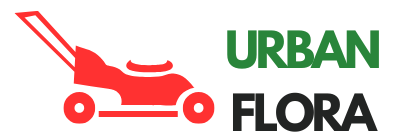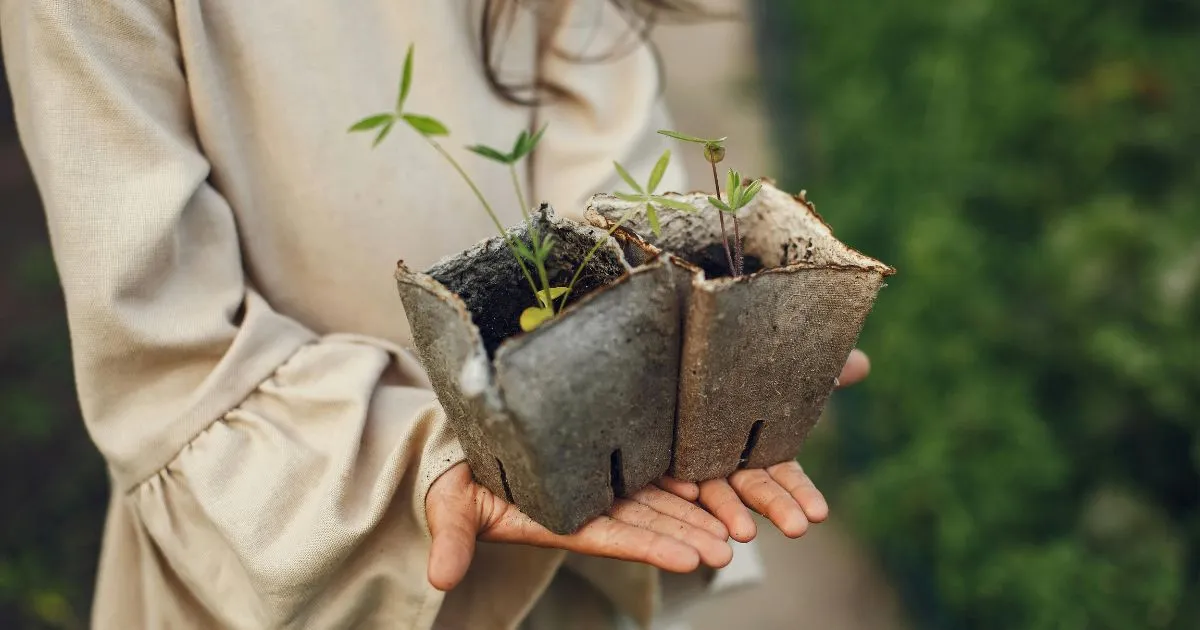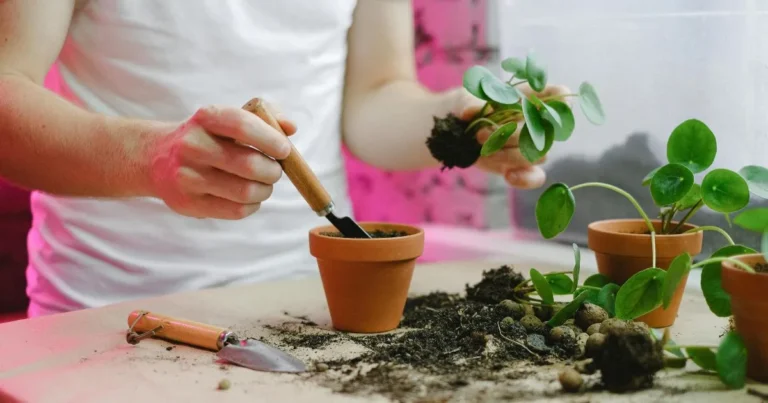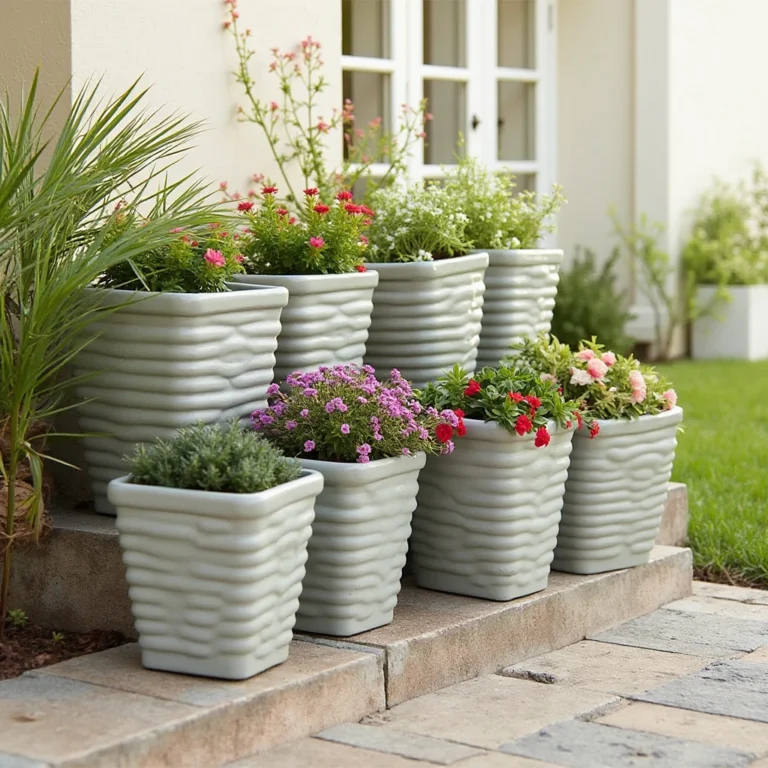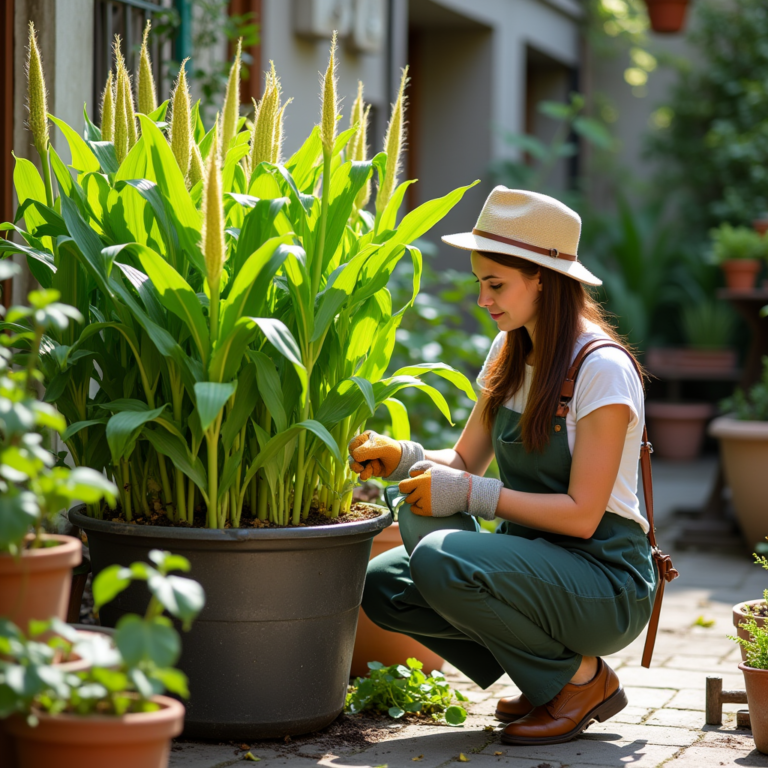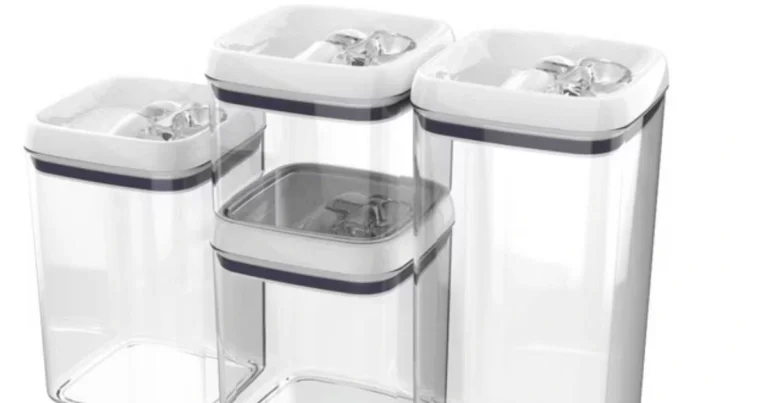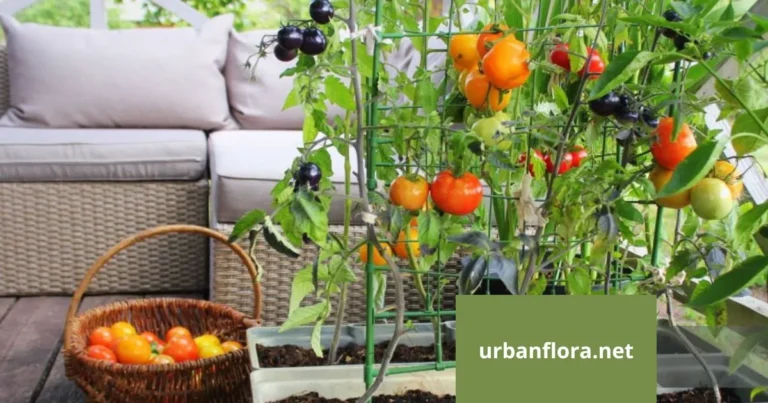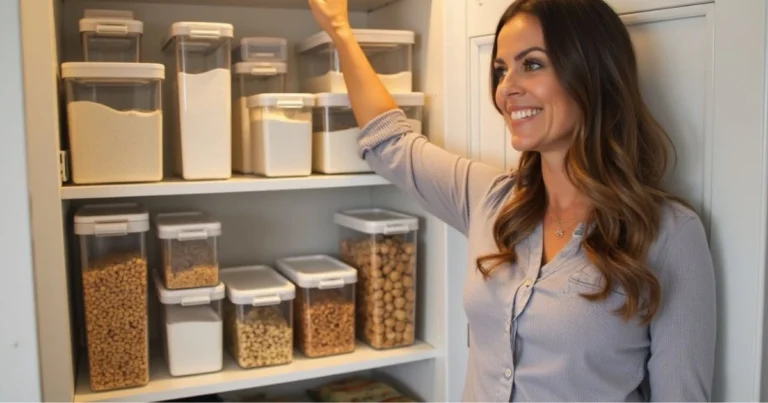Best Way to Grow Corn in Containers in 2025
Table of Contents
Best Way to Grow Corn in Containers in 2025
Growing corn in containers is fun and rewarding. It lets you enjoy fresh, delicious corn right at home. Even with limited space, you can grow corn in containers. It’s perfect for small backyards or balconies.
To grow corn in containers, you need to know the basics. You also need to understand what corn needs in containers. By following the right steps and using the right materials, you can have a big harvest of fresh corn. Learning to grow corn in containers is easier than you think. With the right help, you can start growing delicious corn soon.
Key Takeaways
- Growing corn in containers is a great way to produce fresh corn at home
- Learning how to grow corn in containers requires understanding the basics of corn growth
- Using the right materials and following the right steps is essential for success
- Growing corn in containers can be done even with limited space
- How to grow corn in containers is a skill that can be learned with the right guidance
- With the right techniques, you can enjoy a bountiful harvest of fresh corn
Why Growing Corn in Containers Makes Sense
When you think about growing corn in containers, it’s key to know the perks. This method lets you control the soil, water efficiently, and move plants for better sunlight. It’s great for city folks with little yard space.
Container gardening brings many benefits, especially for growing corn. You can manage the soil, save water, and feed your plants well. Plus, you can move them to get the right sunlight and shade.
Benefits of Container Growing
- Improved soil control and quality
- Efficient watering and reduced water waste
- Ability to move plants to optimize sunlight and shade
Growing corn in containers is a smart choice for container gardening. With the right techniques and containers, you can grow tasty corn in small spaces. It’s ideal for city gardeners who want to grow their own food without a big yard.
Essential Requirements for Growing Corn in Containers
To grow corn in containers, you need to know a few things. Corn needs lots of sunlight, well-draining soil, and enough water. When growing in containers, pick a big enough pot and use special container soil.
Some important requirements for growing corn include getting at least 6 hours of direct sunlight daily. Keep the soil temperature between 65-75°F (18-24°C). Ensure the pot has drainage holes.
For container gardening requirements, choose a pot that’s at least 12-15 inches deep for the corn’s roots.
Here are some key things to think about when growing corn in containers:
- Use a quality potting mix for containers.
- Watering: Water your corn plants when the top 1-2 inches of soil feels dry to the touch.
- Fertilization: Feed your corn plants with a balanced fertilizer once a month.
By knowing and following these requirements, you can create a great space for your corn to grow in containers.
| Factor | Requirement |
| Sunlight | At least 6 hours of direct sunlight per day |
| Soil Temperature | 65-75°F (18-24°C) |
| Container Depth | At least 12-15 inches deep |
Selecting the Perfect Container for Your Corn
Growing corn in containers is possible, but picking the right pot is key. You might ask, can you grow corn in a pot? Yes, you can, but you need to think about the size of the container. A small pot can cause weak plants, but the right one supports healthy growth.
The best container for corn should be at least 12 inches deep. This depth helps the corn’s roots grow well. The material of the container also matters. Plastic and metal keep more heat than wood or clay. It’s also important to have good drainage to avoid soggy soil.
Key Considerations for Container Selection
- Container size: at least 12 inches deep
- Material: consider the impact on soil temperature and moisture levels
- Drainage: ensure good drainage to prevent waterlogged soil
Choosing the right container is crucial for your corn’s health and a good harvest. Whether it’s a balcony or a backyard garden, picking the right container is vital. Think about what your corn needs and pick a container that fits those needs. This way, you’ll enjoy a tasty and rewarding harvest.
Best Soil Mix and Preparation Methods
Growing corn in containers needs the right soil mix. It should drain well, be rich in organic matter, and have a balanced pH. You can add compost or fertilizer as directed to get this.
Preparing soil for corn means thinking about its nutrient needs. Corn needs more nitrogen, phosphorus, and potassium.
Some important things to think about when preparing soil for corn include:
- Soil pH: Corn likes a slightly acidic to neutral soil pH, between 6.0 and 7.0.
- Organic matter: Adding compost or well-rotted manure can make the soil better and more fertile.
- Nutrient balance: Corn needs a mix of nitrogen, phosphorus, and potassium. Choose a fertilizer that has these nutrients.
By preparing the right soil mix for containers and preparing the soil for corn, you can give your corn a great start. Choose a high-quality soil mix for containers made for growing corn. Follow the instructions for preparing soil for corn to get the best results.
How to Grow Corn in Containers: Step-by-Step Process
Planting corn in a raised bed or from seed requires a clear plan. First, pick a corn variety that grows well in containers. Look at maturity days, disease resistance, and yield.
Next, prepare the soil. Keep it moist for the first weeks after planting. As plants grow, they need support against wind. Add stakes or a trellis for support.
Seed Selection Tips
Choosing the right seeds is key when growing corn from seed. Opt for seeds that resist disease and germinate well.
Planting Depth Guide
Plant seeds 1 inch deep, 6 inches apart. This space helps with sunlight and air.
Spacing Requirements
Spacing is crucial for corn in raised beds or containers. Leave enough space for air and sunlight. This prevents disease and promotes growth.
| Container Size | Number of Plants | Spacing |
| Small (12 inches) | 2-3 plants | 6 inches apart |
| Medium (24 inches) | 4-6 plants | 8 inches apart |
| Large (36 inches) | 6-8 plants | 10 inches apart |
By following these steps, you can grow corn in containers successfully. Keep the soil moist and support the plants as they grow.
Watering and Fertilization Schedule
When growing corn in containers, watering corn in containers is key. Corn needs 1 inch of water weekly.This can come from rain or irrigation. Keep soil moist, not soggy, to prevent root rot.
To check the soil moisture, stick your finger into it up to the first knuckle. This helps ensure the right amount of water.
Also, fertilizing corn is vital. Use a balanced fertilizer once a month. But, corn needs different nutrients at different growth stages. Adjusting the fertilizer helps promote healthy growth and better yields.
- Use a balanced fertilizer with nitrogen, phosphorus, and potassium.
- Apply the fertilizer once a month, taking care not to over fertilize.
- Consider using a fertilizer that is specifically formulated for corn, as it will contain the right balance of nutrients.
By following these tips, you can help your corn plants thrive. Keep the soil moist and provide the right nutrients. This will lead to a bountiful harvest of delicious and healthy corn in containers.
| Week | Watering | Fertilization |
| 1-2 | Keep soil consistently moist | Apply balanced fertilizer |
| 3-4 | Reduce watering to 1 inch per week | Apply fertilizer specifically formulated for corn |
| 5-6 | Continue to keep soil moist | Apply balanced fertilizer |
Supporting and Protecting Your Container Corn
As your corn plants grow, supporting corn plants is key to keep them upright. You can use stakes and twine to gently tie them. This helps your plants grow strong and healthy.
Protecting your corn from pests is also vital. Pests like aphids, earworms, and raccoons can harm your plants. To fight pests, you can use organic or chemical methods. Regular checks on your plants help catch problems early.
Here are some ways to protect your corn:
- Use natural pest control, like beneficial insects or soapy water sprays
- Apply chemical pesticides carefully, following the instructions
- Install physical barriers, like fine-mesh screens, to keep pests away
By supporting corn plants and protecting corn from pests, you’ll get a great harvest. Always watch your plants closely to make sure they get the care they need.
Managing Common Corn Growing Problems
When growing corn in containers, you might face some common issues. It’s important to control pests like aphids and earworms. Check your plants often for signs of pests. Use neem oil or pick them off by hand to keep them away.
Keeping your corn healthy also means preventing diseases. Good air flow, removing sick plants, and using fungicides can help. Problems like yellow leaves, poor germination, or low yields can be fixed with the right steps.
Pest Control Methods
- Apply neem oil to control aphids and pests.
- Hand-pick earworms and other large insects
- Clear weeds and debris to deter pests.
Disease Prevention
To prevent disease, make sure to:
- Provide good air circulation around your plants
- Remove diseased plants to stop disease spread.
- Treat fungal diseases with fungicides
| Common Corn Problem | Solution |
| Yellowing leaves | Check for nutrient deficiencies or overwatering |
| Poor germination | Check soil temperature and moisture levels |
| Low yields | Check for pest or disease issues, and ensure adequate fertilization |
Pollination Techniques for Container Corn
Growing corn in containers requires careful pollination for a good harvest. Since corn relies on wind for pollination, containers might need extra help. To help pollinating corn, gently shake the plants. This moves pollen from the tassels to the silks, boosting your corn’s yield.
To improve container corn pollination, place multiple plants close together. This setup helps the wind carry pollen between them. Knowing how to help with pollination can lead to a rich harvest.
Here are some tips to enhance pollinating corn in containers:
- Grow multiple plants together to facilitate natural pollination
- Gently shake the plants to transfer pollen from the tassels to the silks
- Use a small, soft-bristled brush to transfer pollen between plants
By using these tips, you can boost the container corn pollination process. Enjoy a successful harvest by regularly checking your plants and adjusting your pollination methods as needed.
| Pollination Technique | Description |
| Shaking the plants | Gently shake the plants to transfer pollen from the tassels to the silks |
| Growing multiple plants together | Facilitate natural pollination by growing multiple plants close together |
| Using a small, soft-bristled brush | Transfer pollen between plants using a small, soft-bristled brush |
Harvesting Your Container-Grown Corn
As you near the end of growing corn in containers, knowing when to harvest is key. The timing affects the corn’s taste and texture. Corn is usually ready to pick about 3 months after planting, but this can change based on the type.
To check if corn is ripe, look for brown husks and fully formed kernels. You can also test the moisture by piercing a kernel with your fingernail. If it’s ready, it should feel slightly soft but still firm.
Timing Your Harvest
Watch the color and texture of the husks and kernels to know when to pick. Check the specific instructions for your corn variety. Picking at the right time ensures the best taste and texture.
Storage Methods
After picking, store corn properly to keep it fresh. You can store it in the fridge. Keep it away from sunlight and heat to prevent drying and loss of flavor.
Signs of Readiness
Look for other signs of readiness besides the husks and kernels. These include:
- The corn stalks turning a light brown color
- The kernels being fully formed and slightly soft to the touch
- The corn ears being fully mature and ready to be picked
By recognizing these signs, you can harvest your container-grown corn at the perfect time. This way, you’ll enjoy a plentiful and tasty harvest.
Conclusion: Success with Your Container Corn Garden
Congratulations on growing corn in containers! You now know how to make your container corn garden thrive. This can be in your backyard, on your patio, or even on your balcony. The key is to give your plants the right conditions and care for them.
Remember, growing corn in containers needs attention to soil, water, and pollination. But the joy of eating your own corn makes it all worth it. Watch your corn plants grow and enjoy the tasty results of your hard work.
You’re on your way to being a great container corn gardener. Enjoy the journey, try new varieties, and share your harvest with others. Happy growing!
FAQ
Can you grow corn in a pot or container?
Yes, growing corn in pots or containers is possible. It’s perfect for those with little space, like a small backyard or balcony. With the right conditions, you can grow corn successfully in a pot or container.
What size container do I need to grow corn?
For growing corn in containers, choose a container at least 12 inches deep. This depth helps the corn’s deep roots. The container should also be wide enough to support the mature size of the corn plants, about 12-18 inches in diameter.
What soil mix should I use for growing corn in containers?
Use a well-draining, nutrient-rich soil mix for growing corn in containers. A potting mix for containers, enriched with compost or fertilizer, is a good choice. The soil mix should have a balanced pH and provide the necessary nutrients for corn, including nitrogen, phosphorus, and potassium.
How do I plant corn in a raised bed?
Planting corn in a raised bed is similar to growing it in containers. First, prepare the soil in the raised bed, making sure it’s well-draining and nutrient-rich. Plant the corn seeds about 1 inch deep and 6 inches apart, following the spacing requirements. Provide support, like stakes or trellises, as the plants grow taller to prevent them from toppling over.
What are the key requirements for growing corn in containers?
The essential requirements for growing corn in containers include: – Full sun exposure (at least 6-8 hours of direct sunlight per day) – Well-draining, nutrient-rich soil mix – Adequate water (about 1 inch per week) – Proper spacing and support for the plants as they grow – Attention to pollination to ensure good kernel development
How do I water and fertilize corn growing in containers?
Proper watering and fertilization are crucial for container-grown corn. Keep soil moist but not soggy. Corn needs about 1 inch of water per week, either from rainfall or irrigation. For fertilization, use a balanced fertilizer and apply it monthly, adjusting the nutrient ratios to match the corn’s specific needs at different growth stages.
